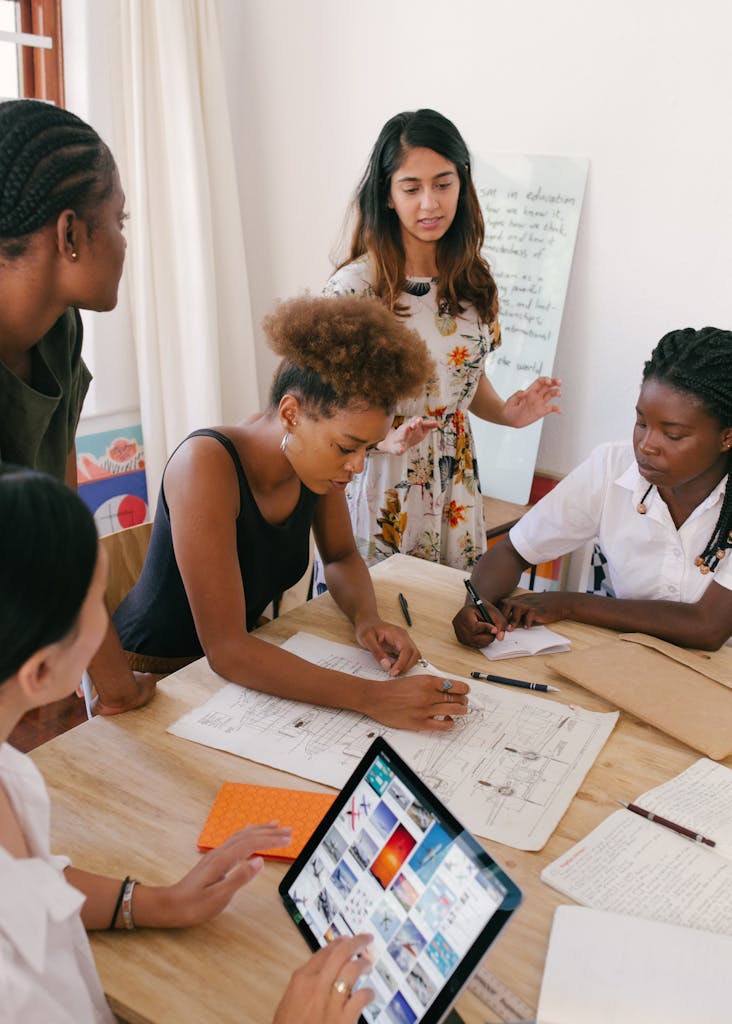Strategic learning boosts organizational efficiency with minimal effort. It focuses on core skills, amplifying results where traditional training falls short. Ideal for companies seeking impactful growth with streamlined, practical learning solutions.
Let’s take a hard look at how we’re teaching folks at work. Picture this: a classroom where someone’s droning on about theories and practices. It’s neat, organized, and, let’s be honest, a bit of a snooze fest. It’s like teaching someone to swim by giving them a PowerPoint presentation without ever letting them get wet.
Content-focused Training
This is how it usually goes: lots of talk about the subject, a heavy dose of facts, and a big focus on the teacher’s game plan.
But what about the learners? They’re often left out of the equation, just passive players in the learning game.
Imagine you’re learning to sell. You could have the best sales strategy in the world, but if you never make a pitch to a real customer, all that strategy means nothing. Or consider leadership training that only happens in boardrooms, with no chance to lead a project or a team in real life. That’s like learning to cook by reading a menu.
And we can’t ignore the elephant in the room: our schools. They’ve been playing this one-note tune for a long time. Sit down, listen, memorize, and repeat. It works for acing tests, but it’s not the way to light a fire in the real world.
If we bring that same school-style learning to work, we’re just spinning our wheels. It’s time to ditch the old playbook.
Training needs to be about more than just head knowledge.
It needs to be hands-on, messy, and a bit unpredictable. When we train for customer service, let’s not just talk about being friendly; let’s practice by dealing with a tough customer. For tech jobs, let’s move past coding on paper and start building real programs that might crash but teach us more than any lecture could.
We’ve got to be bold, not just safe.
Real growth comes from doing things, not just knowing things.
It’s time to change the game and create a new kind of learning – one where people can test their wings, make mistakes, and learn how to soar.
That’s how we turn learning into a launching pad for real innovation and change.
It is not all your fault.
Let’s set the record straight: I am not pointing fingers at today’s leaders. They’re doing what they were taught, playing by the rules of a game we created.
But here’s the kicker: the game is flawed. In our schools, we have a crisis – a serious case of learning poverty where kids can’t even read at grade level by the time they hit fourth grade. That’s not on them; it’s on a system that’s failing its future stars.
Now, take that same system to the workplace. Organizations want leaders, so they pack their employees off to seminars where they’re supposed to get a crash course in what takes months to cover in an MBA program. It’s insane. You’re there, trying to take in a semester’s worth of learning while someone’s flipping through slides at warp speed. It’s like trying to quench your thirst by putting your mouth to a firehose – too much, too fast, and too forceful.
And let’s talk about those seminars. They often promise the moon, take your cash, and leave you with a binder full of buzzwords instead of skills you can use. It’s a transaction where they count success by pesos earned, not by wisdom shared or lessons learned.
We can’t keep up this madness. We’ve got to hit pause and ask ourselves: what are we really trying to achieve? Do we want leaders who can recite models and strategies, or do we want people who can navigate the choppy waters of real business challenges with courage and creativity?
We need a new blueprint, one that values the learner’s journey over the end-of-day receipts. It’s about time we make learning a two-way street, where the goal is to spark real understanding and insight, not just transfer information.
Let’s create spaces where mistakes are not just tolerated but welcomed as a sign of progress and where every dollar spent on learning is an investment in making a difference, not just making the grade.

What is strategic learning?
Strategic learning isn’t just about stocking up on facts and figures. It’s learning with direction, with your end game in focus. It’s the type of learning that shapes the world to match your vision and values. It’s not hung up on the ‘what’—because while knowing things is good, understanding the ‘who,’ ‘why,’ and ‘how’ is what really matters.
So, when it’s time to craft learning programs, you’ve got to start with the people. What’s their mission? What do they need to achieve their goals? You figure out the outcomes they’re after, the kind of actions they need to take to get there, and the mix of skills and mindset shifts required to turn those actions into habits.
Then comes the fun part: immersive learning experiences. This isn’t about reading a chapter and calling it a day. It’s about diving into simulations, role-playing, real-world problem-solving—getting your hands dirty with practice, not just theory.
That’s strategic learning: learning that’s alive, that breathes purpose into every lesson, and that transforms the learner not through memorization, but through experience. It’s learning that doesn’t just change what you know; it changes what you do and ultimately, who you become.
Strategic learning belongs to the learners.
You’re not out there to put on a show with bells and whistles like endless coffee, catchy icebreakers, or flashy presentations to keep people awake. You’re not interested in being the loudest voice in the room or the one who always has the stage. Instead, you’re turning the spotlight where it belongs: on the learners.
Your approach is all about engagement, but not the kind that’s just for kicks. It’s the deep, meaningful kind that comes from solving real problems. You’re there to offer learning that isn’t just interesting—it’s necessary. It’s the kind of learning that picks up where passion meets practicality.
Strategic learning doesn’t just toss information at people; it serves them a customized solution on a silver platter. It’s designed to light a fire under them, give them the tools they need, and then stand back as they use these tools to carve their path forward.
It’s about making sure that when the learners walk away, they don’t just know something new—they can do something new and feel ready to tackle challenges head-on.
That’s not just education; it’s transformation.
Strategic learning is playful and immersive.
Strategic learning can—and should—have a playful side. Games and humor aren’t just there to break the ice; they’re part of the toolkit for serious learning. By weaving in play, you’re not playing around; you’re using a strategy as old as humanity itself to hook attention and make the lessons stick.
In your playbook, games are the practice field. They’re where theory meets action, where abstract concepts become concrete skills, and where learning meets lasting memory. It’s about taking the essence of play—experimentation, competition, discovery—and using it to engrave deeper understanding.
And humor? It’s the secret sauce. It relaxes people, sure, but it also makes challenging content more approachable. It can turn the mundane into the memorable and transform a tough lesson into a takeaway that resonates.
But you know the score: these aren’t just for laughs or light moments. They’re the means to an end. Your end game is to unlock potential, to stir up the pot of creativity and problem-solving skills in a way that’s as enjoyable as it is effective. So you’re not just tossing in a game for the heck of it; you’re strategically deploying it as a critical part of the learning journey. It’s fun with a purpose, and that’s the best kind of fun there is.
Strategic learning is a lever.
Strategic learning is the judo of education—it’s about using leverage, not brute force. It’s knowing that to move big obstacles, you don’t need more muscle; you just need the right point of effort.
That’s tiny learning. It’s not about consuming every bit of information out there; it’s about digesting the right pieces that give you the strength you need for today and the agility for tomorrow.
Think about it: you wouldn’t use a chainsaw to slice bread. Why take in everything when you can zero in on what’s important? That’s the beauty of strategic learning. It asks, “What’s the minimum I need to know to make the maximum impact?” It respects your time, your energy, and your intelligence.
This kind of learning isn’t a daily vitamin that you take because you might need it. It’s the Swiss Army knife for your brain, packed with exactly what you need, when you need it. It’s the lever that Archimedes was talking about when he said he could move the world with the right place to stand. Strategic learning is that place to stand.
So, forget about the firehose of facts. Stop trying to drink in the ocean. Target your learning like you target everything that matters—with precision and purpose. Pick up that lever and get ready to move the world, one strategic insight at a time.
Cultivate strategic learning.
Cultivating strategic learning is like planting a garden of possibilities: you start with the soil and the seed—people and purpose.
First, get clear on your theory of change. Ask yourself, what’s the big splash—the impact you’re after? Nail down the results that spell success, pinpoint the behaviors that’ll get you there, identify the learning that’ll change those behaviors, understand the reactions you’re aiming for, and then decide on the input needed to fuel the whole process.
Shooting for a tenfold improvement is often easier than making a 10 percent gain.
Why? Because small thinking leads to small steps, which often meet big resistance. But when you aim for the stars—going for a big, bold leap—you inspire people to think outside the box, to stretch beyond their comfort zones, and to break free from the ‘we’ve always done it this way’ mindset.
So, go ahead and learn—learn with intention, learn with focus, and learn with the aim to make a quantum leap. The road less traveled by traditional education is the one that leads to innovation and transformation.
And you’re not walking that road alone. Encourage others, build a community of strategic learners, and watch as the seeds you plant today grow into the achievements of tomorrow.
That’s the power of learning strategically, and it’s yours for the taking.
If you’re building a business and you are playing to win…
Let’s install one shift that moves metrics.
→ Shift Experiences


